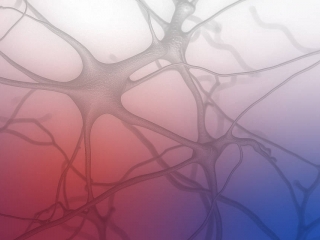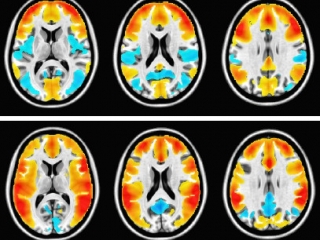Developmental Trajectories & Psychiatry (INSERM U1299)
Presentation of the thematic area
How do brain, psychological, cognitive, and sensorimotor changes during adolescence predict vulnerability, or resilience, to emotional disorders and risky behaviors? To find out, this experienced research team is focusing on the multimodal characteristics of psychiatric disorders with a neurodevelopmental component. They are studying cohorts of typically developing youth, individuals at risk for depression, anxiety or addiction, or with social brain abnormalities in autistic disorders.
Its research interests lie at the interface between clinical psychiatry and applied mathematics. The team models longitudinal data acquired from childhood to adulthood to characterize typical trajectories of cerebral and psychological development. It looks for factors predictive of psychiatric disorders, by comparing measurements of patients examined in hospital wards with trajectories of psychological and cerebral development in the general population.
Key words
Mental health; Psychiatry; Modeling; Machine learning; MRI; Adolescence; Development; Emotional disorders; Reward system; Depression; Addictions.
Key facts
- The team used machine learning to study adolescents' future anxiety (Molecular Psychiatry, 2023). These results were highlighted by the Haut Conseil de la Santé Publique in its report on the national health strategy 2023-2033 (March 2023 edition), as it highlights the potential of artificial intelligence, which “could accompany healthcare professionals and individuals in sectors other than care”. Numerous publications in the specialized and general media have been based on this work.
- Brain imaging results on European adolescents published in Neuroimage, 2019 and Nature Neuroscience, 2023 contributed to the rationale for lowering the age of protection for adolescents in a law passed by Parliament (provisions reinforcing the protection of minors against sexual violence), followed by a prevention campaign launched by the government.
- The team contributed to the production of European recommendations on the digital practices of psychologists, with the Ethics Committee of EFPA (European Federation of Psychologists' Associations), published in April 2023: “Psychological services via internet and other digital means: recommendations for ethical practice”.
- The team used functional neuroimaging to study the spontaneous brain activity of adult patients whose first depressive episode occurred during adolescence. Using dynamic analysis of MRI images of spontaneous brain activity, this research published in Biological Psychiatry: Cognitive Neuroscience and Neuroimaging has detected dynamic inflexibility between the limbic affective network and prefrontal cognitive networks. Using mathematical approaches that take into account the statistical and dynamic properties of brain function, the team was able to characterize the functional networks involved in rumination of thoughts, a purely subjective human practice, frequent in young people, but often neglected. It was possible to show that these “ruminative networks” are involved in the appearance of “internalizing” symptoms (anxiety, depression) or “externalizing” symptoms (impulsivity, agitation, addiction...). The team was thus able to conclude that ruminations are interesting for preventive mental health research.
Applications
- Prevention of risky behavior in adolescents: Mediating the transition to major depressive disorder involves circumscribed brain regions in early adolescence. The lab was the first to demonstrate brain changes in ventromedial frontal regions, the striatum and cingulate, and adjacent white matter bundles, using a longitudinal model in at-risk adolescents. In addition, he reported that these changes may have predictive value in individuals, which should support new intervention models for targeted prevention. This information highlights the vulnerability of neuro-affective systems in young adolescents and has justified the stratification of the age of protection in adolescence in a law passed by the French Parliament. These findings were also presented at a 2019 Senate hearing on adolescent protection as part of the revision of French bioethics laws.
- Adolescent Addictions: There is very little information about young people who successfully stop an addiction. The team therefore looked for brain changes associated with spontaneous cessation of poly-substance use. To do this, they studied European adolescents with questionnaires and brain MRIs over a period of 5 years. In those who spontaneously stopped their excessive use, brain changes were detected, particularly in the cingulate gyrus, a key brain region involved in the "reward circuit". In addition, measures of the cingulate gyrus had individual predictive value according to a machine learning approach. These results publiched in European Neuropsychopharmacology can contribute to new rehabilitation models for those most at risk, in synergy with other approaches.p
- Creation of an exceptional database on at-risk adolescents: The team has created the first European cohort of 2,000 adolescents followed for 10 years with foreign partners. It has also imported data from a complementary American cohort of 11,000 children followed from age 9 to 16. These multidisciplinary resources will be combined with the young patients' assessments.





